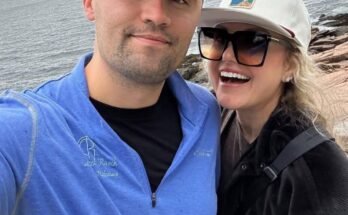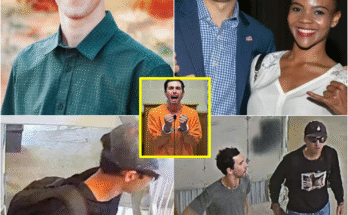A Night to Remember: Keith Urban and Paul McCartney Forge a Historic Musical Moment
The stage lights over Wembley Arena dimmed, then flared in a brilliant burst that tore through the hushed crowd like a wave. The buzz of anticipation peaked as the figure of Keith Urban emerged onstage, acoustic guitar in hand, drawing cheers from every corner of the venue. But tonight, the air carried more than just excitement—it held history.
Moments earlier, backstage, Keith had been pacing in his dressing room, heart racing. He’d been asked to step onto the stage of a global icon. The legendary Paul McCartney was preparing to perform special acoustic renditions of The Beatles’ greatest hits, and Keith had been invited as his only guest artist. The pressure was immense. But as he tuned his guitar and heard the crowd’s murmured energy, a calm confidence settled over him.
When Paul finally appeared—gray hair glinting under the lights, a trademark bass slung low—he was met by thunderous applause. His voice, rich and warm, carried the opening lines of “Blackbird” into that stadium, a song of resilience and renewal. And then, suddenly, he stopped. It was time.
Paul smiled at Keith, put a hand on his shoulder, and said, “You ready, mate?” Keith swallowed hard and nodded. Together, they stepped into a rare joint spotlight. The first chords of “Something” rang out—soft, tender, familiar—arranged uniquely for their two voices.
If anyone was caught off-guard, it was the audience. Keith’s smooth, modern tonality braided effortlessly with Paul’s iconic, timeless resonance. The melding of eras—the Aussie country-rocker and the British Beatle—felt impossible and inevitable all at once.
Halfway through the first verse, Keith veered off-script and infused the melody with a shimmering guitar solo, weaving in little licks of bluegrass and southern twang. Paul looked at him, surprised, then beamed. He followed with a delicate bass line beneath Keith’s intricate riffing. The duo made musical magic—an improvised moment that no one, not even the performers, saw coming.
Up in the VIP box, Nicole Kidman sat in hushed wonder. From the moment Paul had embraced Keith in a warm greeting before the performance, she knew something transcendent was unfolding. Her hand clasped Keith’s mother, who had flown in from Australia. Together they watched him stand shoulder to shoulder with a living legend. As Keith’s guitar spoke—its notes echoing across the auditorium—Nicole’s eyes welled.
The surprise didn’t end there. After “Something,” Paul whispered something only Keith could hear. Keith nodded and began playing the opening notes of “Blue Ain’t Your Color,” one of his own hits. The audience gasped again—this time at the unexpected blend of Keith’s song with Paul’s melodic embellishments. Then Paul joined in, singing the chorus in harmony. Against every expectation, they performed a surprise mash-up—Beatles meets modern country—emotional and uplifting.
Nicole’s tears spilled over. She pressed a hand to her cheek as she watched her husband command the stage—not as a support act, but as a co-creator in a musical conversation with one of the most influential figures in the history of music. For her, it was a culmination of quiet years—years of Keith practicing in their home basement, of late-night writing sessions and dream-chasing. All of it, on this night, crystallized.
But the real shock came as the final chords faded. Paul stepped back and hushed the arena. “We’re not done yet,” he said quietly. At his cue, a lone spotlight illuminated a grand piano at center stage. Paul sat and opened the keys, beginning the gentle intro to “Let It Be.” Keith joined him, fingers dancing across the piano in harmony with Paul’s. Simultaneously, he switched between piano and guitar, creating a layered arrangement that built and swelled with emotional weight.
Nicole gasped—a gasp that rippled through the box and beyond. She felt tears rushing down her cheeks in surprising relief and gratitude. People around her began to weep too, their reactions magnified by the intimacy of the performance despite the epic scale of the stage.
When the final note of “Let It Be” faded into silence, the arena erupted in applause. Paul and Keith exchanged a long look, salt-of-the-earth respect in their eyes, and Paul raised Keith’s hand. The crowd roared its approval, and even backstage crew members wiped their eyes. This was more than a concert—it was a moment of connection across generations, a reminder of music’s power to unite and heal.
After the show, Nicole hurried down through the backstage corridor to find Keith. She threw her arms around him in an embrace that stopped him mid-stride. “You were luminous,” she whispered, choking on the words. He held her fiercely, still in disbelief. She felt the adrenaline and love pulsing between them both.
Keith recounted how Paul whispered to him during “Something”: “That was beautiful. Let’s surprise ’em more.” It humbled him. He realized how rare it was for two artists from different eras and backgrounds to find such deep harmony in a live, unrehearsed setting.
Meanwhile, a viral moment was brewing. Fans had captured the duo’s mash-up of “Blue Ain’t Your Color” with Paul’s harmonies, as well as the subsequent piano duet. Social media exploded. Comments, shares, and night-after-night clips described it as “history in the making,” “a generational handshake,” “a music fan’s dream.”
At the after-party, Paul lifted a glass. “To Keith,” he toasted, “for reminding me how it feels to fall in love with a song again.” Keith looked around the room—filled with music legends, collaborators, and longtime friends—and felt elated, humbled.
Nicole stood beside him, proud beyond words. She could still feel the lingering chords in her chest. In that moment, she knew that fans had witnessed something rare: two artists, without ego, without over-production, just humans connecting through melody.
In the following days, every major music outlet covered the performance. Critics praised the seamless connection between Paul’s timeless genius and Keith’s modern flair. Articles kept pointing to Nicole’s reaction as emblematic of the night’s emotional core. One review wrote: “When Nicole Kidman cried, the world understood. Something historic happened up there.”
For Keith, the performance became a career-defining moment—not because he harmonized with a Beatle, but because he did so with humility, authenticity, and creative courage. For Paul, it reaffirmed his love for collaboration and his openness to be surprised. And for Nicole Kidman, it was a memory she would treasure forever—her proudest moment, watching her husband stand in the light beside a musical legend.
Years from now, people will still ask, “Were you there when Keith Urban and Paul McCartney shared a moment onstage, and Nicole cried?” And for those who were, the answer will be simple: Yes. And I felt every note.





